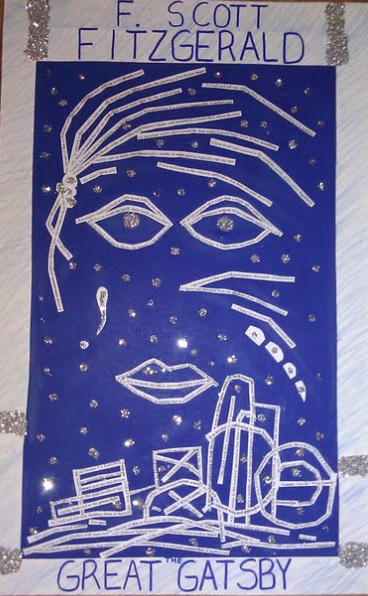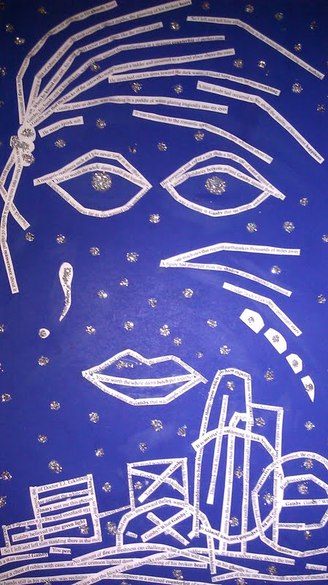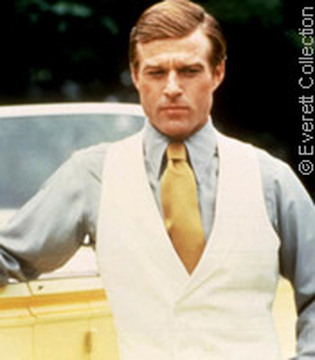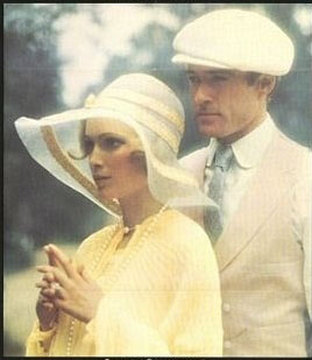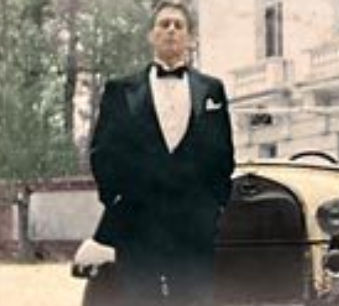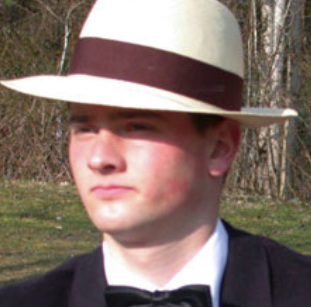Historical Perspective
Hanna And The Roaring Twenties: A Love/Hate Story
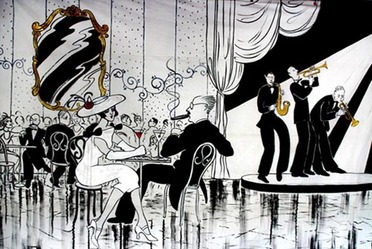
I hated the twenties. The allure that seemed to draw so many to that time of American history was lost on me, to the point where the Great Depression was something to be looked forward to, as a blessed relief from a decade of inanity. I wish I could say that it was solely this project that changed my perspective, that through Gatsby I found new significance in garden parties and flapper dresses. This simply isn’t the whole truth. This change of heart was also due to the happy coincidence of PBS’s broadcasting schedule. History geek that I am, I eagerly anticipated the premiere of the new Masterpiece drama, “Downton Abbey” which chronicles life on the Crawley estate in Yorkshire in the years leading to the First World War. The similarities to the 1920’s are startling. These two cultures stand on the edge of the world, trying to forget the past and avoid the future. In both periods there is the quiet desperation of a last hurrah, Europe’s “last summer” before the Continent descends into war, Nick’s 30th birthday heralding the beginning of the Depression. The study of history is a constant attempt to make connections, to understand human nature at it’s most basic, and ultimately through this understanding, to find empathy for those who came before us. Through the juxtaposition of English society in the 1910’s and American society in the 1920’s I have gained a new appreciation for the world that Gatsby lived in. Those elements that I resent remain, but beneath the frivolity for which the “Jazz Age” is known, there is something deeper, historically significant, and even admirable. What follows is a comparison of the two decades, and more importantly an examination of my preconceptions about the 20’s. History, to me, will always be the emotive science, a discipline where personal feelings are not only acceptable but necessary. How we feel about our topic shades everything we do and write, and therefore an alteration of our emotions can instigate a significant change of perspective.
Sometimes our feelings can change when we discover new commonalities. If I can admire their British compatriots, why am I so unforgiving to a comparable American decade? While we have all read The Great Gatsby and understand the background of the twenties, many people may be more unfamiliar with Europe in the early 20th century. This is the period known as Edwardian England, dating from 1901 to 1910. Sandwiched between Victorian England and the beginning of World War I, it was truly the last decade of the English aristocracy. Class divisions were at their most prominent, and the world of the wealthy was as hedonistic as the American upper classes in the twenties. It was very literally the end of an era, and while the world balanced on the brink of war, life on the home-front was also going through significant changes. This period is the most romanticized in British history, most specifically the “last summer” of 1914, when the weather was the fairest in recorded history and the parties the most lavish. It was the “period of pleasure” between the immense scientific achievements of the Victorian Age and the chaos of the First World War. As with the Roaring Twenties however, beneath this bejeweled surface lay an immense seething underbelly, threatening to burst forth and destroy the life to which the wealthy had become accustomed. It was a world that could never be recreated after the shattered illusions of war, and a decade which subtly laid the foundations for great social change.
One of the greatest similarities between the Edwardian period and the 1920’s is the immense social stratification found in both cultures. This division is clearly depicted in The Great Gatsby, readers are acutely aware that Gatsby will never be accepted by the Buchanan’s, regardless of his wealth. The disparity between East and West Egg wealth is unmistakable, and Gatsby’s attempts to upset the status quo are fruitless. Daisy married Tom for his name and respectability, and no bootlegger, no matter how wealthy can provide such a life for her. While Gatsby may refuse to accept his place, the other characters in the novel are painfully aware of theirs. Myrtle, who attempts to disguise her history with puppies and New York apartments, Jordan the sporting woman who still needs Nick as an escort to parties, and even Nick himself who remains ill at ease with Gatsby’s lavish living fit within their stations. Birth it seems, determines a man’s life, however much he tries to escape it. In the characters of Gatsby and even Myrtle, however, the reader does see the beginnings of social change, the rise of the self made man, and the bridging of East and West Egg society to the dismay of the old wealth. Tom, the racist who uses Gatsby’s heritage to discredit him, is the last holdout of a bygone era and a social structure that is beginning to tumble. The same is seen during the Edwardian Era. Though the class system is at it’s most rigid, it is becoming increasingly apparent that it cannot endure. The careful ranks of ladys maid, housekeeper, butler, lord and lady are beginning to chafe, and a decade of war will herald the dawning of the Modern British age. This promise provided little relief to those in service before the war, but did much to disquiet the ruling classes. Industrialization and the rise of socialism threatened the traditional way of life for the upper classes who, like Tom, feared and resented change. This was to be the last summer of the “country manor,” the last period of such regimented society.
The 1920’s and Edwardian England were also both periods of great social change, masked by the excesses of wealth. Despite the best efforts of traditionalist, both cultures adopted a pessimism that lent itself to the relaxing of social standards. If the world was indeed ending, why should it not go out with a bang? While much of this hedonism was seen in the frivolous parties and careless expenditures of the rich, there were many more subtle and beneficial expressions of this fatalism. Most significantly, both periods saw the beginning of great changes in the role of women. In The Great Gatsby this new modern woman is epitomized by Jordan Baker, the independent sports champion who pursues Nick and dictates the nature of their relationship. As a woman in her late twenties to early thirties, she appears in no great hurry to marry, and easily begins a relationship of convenience with Nick. The standards of beauty of the twenties reveal this new ideal woman; the desired aesthetic no longer empathized curves but a decidedly masculine shape. Corsets were no longer used to create hourglass silhouettes, instead many women bandaged their breasts to appear flat chested, and dresses were cut severely to eliminate waists and hips. Femininity was eliminated in favor of a masculine silhouette completed by a bobbed hair cut.
In the Edwardian Era, changes in fashion were more limited, however the gradual elimination of the corset was a significant achievement. The revolutionary nature of this period was focused mainly on political goals. The early 20th century heralded the organized campaign for women’s voting rights and increased political involvement. The period also saw slightly relaxed social standards for women. In “Downton Abbey” the youngest daughter of the lord is a keen political organizer and suffragette, helping one of the ladys maids pursue a job as a secretary, a massive improvement over her current job. The women of Edwardian England were the predecessors of the militant suffragettes who would later win the right to vote, and help to ensure that their American sisters achieved the same victories. In both societies, there remain limitations, however. The double standard of Tom’s affair with Myrtle and his reaction to Daisy’s relationship is unmistakable, and both Tom and Gatsby regard Daisy as a prize to be won rather than an independent human being. When in “Downton Abbey” the eldest daughter asserts that, “times are changing for women” her mother tacitly responds, “Not that much. And not fast enough for you”.
Finally, the most obvious similarity between the two periods stems from their lavish natures. In both cases, it was only the upper class which was privy to such delights, and these parties and events were used mainly to distract them from the ground crumbling from beneath their feet. In The Great Gatsby we see how careless the wealthy appear, spending and behaving as though their actions have no repercussions. Attaining wealth appears to open a carefree world of pleasure and joy, but the reader can see that these displays only mask the quiet desperation of even the most fortunate. Rather than face reality, be it the coming economic crash or the futility of one’s own dreams, the wealthy attempt to cocoon themselves away from the rest of the world, drinking and dancing themselves into oblivion. The same is true of the last years of the Edwardian Age. As England sailed perilously close to war, the rich enjoyed their last, most beautiful summer of bliss. It would forever be regarded as the “ lost golden age,” the “last summer of innocence”. Oscar Wilde’s words in A Woman of No Importance are applicable to both times “Moderation is a fatal thing. Nothing succeeds like excess”. Unfortunately for both decades, all the excess in the world could not forestall the First World War or the Great Depression.
After placing the Roaring Twenties in context by considering their similarities with the Edwardian Age, I was forced to confront my own preconceptions about this decade.
Sometimes our feelings can change when we discover new commonalities. If I can admire their British compatriots, why am I so unforgiving to a comparable American decade? While we have all read The Great Gatsby and understand the background of the twenties, many people may be more unfamiliar with Europe in the early 20th century. This is the period known as Edwardian England, dating from 1901 to 1910. Sandwiched between Victorian England and the beginning of World War I, it was truly the last decade of the English aristocracy. Class divisions were at their most prominent, and the world of the wealthy was as hedonistic as the American upper classes in the twenties. It was very literally the end of an era, and while the world balanced on the brink of war, life on the home-front was also going through significant changes. This period is the most romanticized in British history, most specifically the “last summer” of 1914, when the weather was the fairest in recorded history and the parties the most lavish. It was the “period of pleasure” between the immense scientific achievements of the Victorian Age and the chaos of the First World War. As with the Roaring Twenties however, beneath this bejeweled surface lay an immense seething underbelly, threatening to burst forth and destroy the life to which the wealthy had become accustomed. It was a world that could never be recreated after the shattered illusions of war, and a decade which subtly laid the foundations for great social change.
One of the greatest similarities between the Edwardian period and the 1920’s is the immense social stratification found in both cultures. This division is clearly depicted in The Great Gatsby, readers are acutely aware that Gatsby will never be accepted by the Buchanan’s, regardless of his wealth. The disparity between East and West Egg wealth is unmistakable, and Gatsby’s attempts to upset the status quo are fruitless. Daisy married Tom for his name and respectability, and no bootlegger, no matter how wealthy can provide such a life for her. While Gatsby may refuse to accept his place, the other characters in the novel are painfully aware of theirs. Myrtle, who attempts to disguise her history with puppies and New York apartments, Jordan the sporting woman who still needs Nick as an escort to parties, and even Nick himself who remains ill at ease with Gatsby’s lavish living fit within their stations. Birth it seems, determines a man’s life, however much he tries to escape it. In the characters of Gatsby and even Myrtle, however, the reader does see the beginnings of social change, the rise of the self made man, and the bridging of East and West Egg society to the dismay of the old wealth. Tom, the racist who uses Gatsby’s heritage to discredit him, is the last holdout of a bygone era and a social structure that is beginning to tumble. The same is seen during the Edwardian Era. Though the class system is at it’s most rigid, it is becoming increasingly apparent that it cannot endure. The careful ranks of ladys maid, housekeeper, butler, lord and lady are beginning to chafe, and a decade of war will herald the dawning of the Modern British age. This promise provided little relief to those in service before the war, but did much to disquiet the ruling classes. Industrialization and the rise of socialism threatened the traditional way of life for the upper classes who, like Tom, feared and resented change. This was to be the last summer of the “country manor,” the last period of such regimented society.
The 1920’s and Edwardian England were also both periods of great social change, masked by the excesses of wealth. Despite the best efforts of traditionalist, both cultures adopted a pessimism that lent itself to the relaxing of social standards. If the world was indeed ending, why should it not go out with a bang? While much of this hedonism was seen in the frivolous parties and careless expenditures of the rich, there were many more subtle and beneficial expressions of this fatalism. Most significantly, both periods saw the beginning of great changes in the role of women. In The Great Gatsby this new modern woman is epitomized by Jordan Baker, the independent sports champion who pursues Nick and dictates the nature of their relationship. As a woman in her late twenties to early thirties, she appears in no great hurry to marry, and easily begins a relationship of convenience with Nick. The standards of beauty of the twenties reveal this new ideal woman; the desired aesthetic no longer empathized curves but a decidedly masculine shape. Corsets were no longer used to create hourglass silhouettes, instead many women bandaged their breasts to appear flat chested, and dresses were cut severely to eliminate waists and hips. Femininity was eliminated in favor of a masculine silhouette completed by a bobbed hair cut.
In the Edwardian Era, changes in fashion were more limited, however the gradual elimination of the corset was a significant achievement. The revolutionary nature of this period was focused mainly on political goals. The early 20th century heralded the organized campaign for women’s voting rights and increased political involvement. The period also saw slightly relaxed social standards for women. In “Downton Abbey” the youngest daughter of the lord is a keen political organizer and suffragette, helping one of the ladys maids pursue a job as a secretary, a massive improvement over her current job. The women of Edwardian England were the predecessors of the militant suffragettes who would later win the right to vote, and help to ensure that their American sisters achieved the same victories. In both societies, there remain limitations, however. The double standard of Tom’s affair with Myrtle and his reaction to Daisy’s relationship is unmistakable, and both Tom and Gatsby regard Daisy as a prize to be won rather than an independent human being. When in “Downton Abbey” the eldest daughter asserts that, “times are changing for women” her mother tacitly responds, “Not that much. And not fast enough for you”.
Finally, the most obvious similarity between the two periods stems from their lavish natures. In both cases, it was only the upper class which was privy to such delights, and these parties and events were used mainly to distract them from the ground crumbling from beneath their feet. In The Great Gatsby we see how careless the wealthy appear, spending and behaving as though their actions have no repercussions. Attaining wealth appears to open a carefree world of pleasure and joy, but the reader can see that these displays only mask the quiet desperation of even the most fortunate. Rather than face reality, be it the coming economic crash or the futility of one’s own dreams, the wealthy attempt to cocoon themselves away from the rest of the world, drinking and dancing themselves into oblivion. The same is true of the last years of the Edwardian Age. As England sailed perilously close to war, the rich enjoyed their last, most beautiful summer of bliss. It would forever be regarded as the “ lost golden age,” the “last summer of innocence”. Oscar Wilde’s words in A Woman of No Importance are applicable to both times “Moderation is a fatal thing. Nothing succeeds like excess”. Unfortunately for both decades, all the excess in the world could not forestall the First World War or the Great Depression.
After placing the Roaring Twenties in context by considering their similarities with the Edwardian Age, I was forced to confront my own preconceptions about this decade.
~
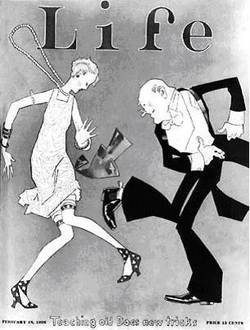
Assumption One
~The twenties were nothing more than one long party, demonstrating the carelessness of the upper classes.
False: Though the twenties initially appear shallow and meaningless, this decade was actually rife with social change. The frivolity of the wealthy was merely an outward reaction to their fear of the future and desire to forget the horrors of World War I.
Assumption Two
~The twenties contributed little to American society, apart from unflattering dresses and haircuts.
False: The Roaring Twenties were a period of great liberation for women, and helped to lay the foundation for the feminist movement. This liberalism also extended to other marginalized groups, as the 20’s were a period of unprecedented acceptance of the gay community and played host to the Harlem Renaissance.
Assumption Three
~The twenties did not produce many significant artistic achievements.
False: The Roaring Twenties produced famous literary works from the “Lost Generation” as well as the rise of the film industry and popularization of expressionism and surrealism.
Assumption Four
~The twenties were an unprecedented display of frivolity and waste.
False: The twenties have many historical predecessors, including Edwardian England and even Ancient Rome, neither of which I judged so harshly.
One studying history should not have a favorite time period any more than a parent should have a favorite child. Theoretically, we should love all decades and countries equally, and stand aloof from our studies. Such austerity however, makes for boring history and weary historians. We pick concentrations because some issues touch us, make us believe that a lifetime of their study would not be ill spent. I will never personally feel that way about America in the 1920’s. I can say however that, as a result of this project and the odd alignment of circumstance, I have changed my perspective of Fitzgerald’s “Jazz Age”. It is a period of complexity and subtlety that is not without merit, nor unworthy of appreciation.
~The twenties were nothing more than one long party, demonstrating the carelessness of the upper classes.
False: Though the twenties initially appear shallow and meaningless, this decade was actually rife with social change. The frivolity of the wealthy was merely an outward reaction to their fear of the future and desire to forget the horrors of World War I.
Assumption Two
~The twenties contributed little to American society, apart from unflattering dresses and haircuts.
False: The Roaring Twenties were a period of great liberation for women, and helped to lay the foundation for the feminist movement. This liberalism also extended to other marginalized groups, as the 20’s were a period of unprecedented acceptance of the gay community and played host to the Harlem Renaissance.
Assumption Three
~The twenties did not produce many significant artistic achievements.
False: The Roaring Twenties produced famous literary works from the “Lost Generation” as well as the rise of the film industry and popularization of expressionism and surrealism.
Assumption Four
~The twenties were an unprecedented display of frivolity and waste.
False: The twenties have many historical predecessors, including Edwardian England and even Ancient Rome, neither of which I judged so harshly.
One studying history should not have a favorite time period any more than a parent should have a favorite child. Theoretically, we should love all decades and countries equally, and stand aloof from our studies. Such austerity however, makes for boring history and weary historians. We pick concentrations because some issues touch us, make us believe that a lifetime of their study would not be ill spent. I will never personally feel that way about America in the 1920’s. I can say however that, as a result of this project and the odd alignment of circumstance, I have changed my perspective of Fitzgerald’s “Jazz Age”. It is a period of complexity and subtlety that is not without merit, nor unworthy of appreciation.
He Said It Best: The Great Gatsby Cover in Quotes
The prospect of attempting an even remotely artistic interpretation of The Great Gatsby was daunting for me. Instead of subjecting the world and myself to my mediocre artistic abilities I decided to go with what I know best: words. I have recreated the original cover of the novel using quotes from the book itself. Each quote describes Gatsby, from various perspectives. How this character views and is viewed is the central theme of our project and I wanted to use tangible examples of the conceptions to illustrate the cover in a distinctive manner.
Typecasting With a Twist: Perspectives From the Past and Present
In keeping with my historical perspective, I wanted to examine the literary predecessors and offspring of Fitzgerald’s characters. Jay Gatsby remains one of the most well known literary characters of all time, and the manner in which Fitzgerald crafted all his characters has influenced how authors depict their own creations. Reading The Great Gatsby has changed the way I consider the role of characters within a story and how I appraise the “worth” of other literary figures. That Fitzgerald’s characters are watershed figures cannot be denied, however, they are not entirely without precedent. Most of his characters, surprisingly, adhere to traditional literary types or stock characters. To this basic outline however, Fitzgerald has added something extra, something special that makes his characters much more than cliches. I have created “want ads” for each of Fitzgerald’s seminal characters, highlighting both their traditional literary types and their own individual traits. I have also included similar characters that were created before and after Fitzgerald wrote The Great Gatsby. In this way we can see the factors that may have influenced how Fitzgerald wrote his characters, and how his creations have, in turn, influenced more modern authors. It is from both the past and present perspective that Fitzgerald’s novel is examined.
Gatsby
Wanted:
Byronic Hero
This type was popularized and named for the writings of Lord Byron (and modeled after the man himself). This hero type is present in the works of many Romantic movement writers, including the Bronte sisters. This character is often considered an anti-hero, but one who holds many redeemable characteristics. This “larger than life” type is the antithesis of the everyman, impossibly intelligent and attractive, despite significant flaws. The Byronic Hero rejects social norms and restrictions, while maintaining a strict code of personal ethics. They are idealized but flawed characters, possessed of great ability and charm, but unable to escape their own character flaws and past. Byronic Heros often have dark and mysterious pasts, disguised by their outward appearances. They are educated, handsome, and charismatic but ultimately flawed and removed from the heroine. Sound like anyone we know?
See: Heathcliff (Wuthering Heights), Edmond Dantes (The Count of Monte Cristo), Rochester (Jane Eyre), Dorian Gray (The Picture of Dorian Gray), Erik (Phantom of the Opera).
Wanted:
Byronic Hero
This type was popularized and named for the writings of Lord Byron (and modeled after the man himself). This hero type is present in the works of many Romantic movement writers, including the Bronte sisters. This character is often considered an anti-hero, but one who holds many redeemable characteristics. This “larger than life” type is the antithesis of the everyman, impossibly intelligent and attractive, despite significant flaws. The Byronic Hero rejects social norms and restrictions, while maintaining a strict code of personal ethics. They are idealized but flawed characters, possessed of great ability and charm, but unable to escape their own character flaws and past. Byronic Heros often have dark and mysterious pasts, disguised by their outward appearances. They are educated, handsome, and charismatic but ultimately flawed and removed from the heroine. Sound like anyone we know?
See: Heathcliff (Wuthering Heights), Edmond Dantes (The Count of Monte Cristo), Rochester (Jane Eyre), Dorian Gray (The Picture of Dorian Gray), Erik (Phantom of the Opera).
Daisy
Wanted:
Ingenue/Damsel in Distress
One of the greatest criticisms of The Great Gatsby is Fitzgerald’s depiction of his female characters. They are mainly peripheral characters, used to reveal traits of the male characters and act as sources of conflict. Of the two main female characters, Daisy is the traditional damsel in distress. This stems more from Gatsby’s view of her rather than the readers conceptions, as it is clear to readers she is as duplicitous as her husband. She is Gatsby’s goal, the prize he hopes to eventually attain. Though she may be the center of his world, Gatsby knows very little about who she really is. He is in love with the idea of Daisy, rather than the corporal human being. He projects upon her his own wishes and desires, making his “idea” of her the typical ingenue or damsel in distress. She is beautiful, innocent, gentle, and sweet in Gatsby’s eyes, making her the perfect ingenue. Her perceived loveless marriage spurs Gatsby to attempt to rescue her, further enforcing her role.
See: Ophelia (Hamlet), Christine (Phantom of the Opera), Lois Lane (Superman)
Wanted:
Ingenue/Damsel in Distress
One of the greatest criticisms of The Great Gatsby is Fitzgerald’s depiction of his female characters. They are mainly peripheral characters, used to reveal traits of the male characters and act as sources of conflict. Of the two main female characters, Daisy is the traditional damsel in distress. This stems more from Gatsby’s view of her rather than the readers conceptions, as it is clear to readers she is as duplicitous as her husband. She is Gatsby’s goal, the prize he hopes to eventually attain. Though she may be the center of his world, Gatsby knows very little about who she really is. He is in love with the idea of Daisy, rather than the corporal human being. He projects upon her his own wishes and desires, making his “idea” of her the typical ingenue or damsel in distress. She is beautiful, innocent, gentle, and sweet in Gatsby’s eyes, making her the perfect ingenue. Her perceived loveless marriage spurs Gatsby to attempt to rescue her, further enforcing her role.
See: Ophelia (Hamlet), Christine (Phantom of the Opera), Lois Lane (Superman)
Tom
Wanted:
Jock
Even without his sporting traits, Tom Buchanan is easily summarized by another literary stereotype: the jock. In The Great Gatsby he also acts as the main protagonist. It would be easy to say that Tom is also a foil to Gatsby, that is physical strength and treatment of Daisy contrast with Gatsby’s intellectualism and pure love. In reality, both men share many commonalities in their behavior, specifically with regards to Daisy. Tom’s perfect foil instead is Tom Wilson, whose love for his wife may be the only true emotion to be found in the book. Tom’s jock archetype is portrayed as physically strong, but intellectually limited, arrogant, and competitive. The Jock bullies those around him, is accustomed to getting his way, and often displays racist or homophobic tendencies.
See: Tommy Ross (Carrie), Curley (Of Mice and Men), Jack (Lord of the Flies)
Wanted:
Jock
Even without his sporting traits, Tom Buchanan is easily summarized by another literary stereotype: the jock. In The Great Gatsby he also acts as the main protagonist. It would be easy to say that Tom is also a foil to Gatsby, that is physical strength and treatment of Daisy contrast with Gatsby’s intellectualism and pure love. In reality, both men share many commonalities in their behavior, specifically with regards to Daisy. Tom’s perfect foil instead is Tom Wilson, whose love for his wife may be the only true emotion to be found in the book. Tom’s jock archetype is portrayed as physically strong, but intellectually limited, arrogant, and competitive. The Jock bullies those around him, is accustomed to getting his way, and often displays racist or homophobic tendencies.
See: Tommy Ross (Carrie), Curley (Of Mice and Men), Jack (Lord of the Flies)
Nick
Wanted:
Narrator
When a story is presented from a point of view other than that of the author, a narrator character is introduced. The entire novel is recounted in this characters voices, and therefore his or her own opinions are inherent to the storytelling. Nick is presented as the ideal narrator, one with no judgments or preconceptions, in whom others confide in and trust. In this manner he becomes quickly immersed in the story, privy to many of the main characters intimate thoughts. The narrator is normally presented as neither a hero nor a villain, simply one who has survived to tell his tale. Often, the narrator voices many of the authors own views in the context of his retelling, and it is evident that Nick embodies many of Fitzgerald’s own characteristics.
See: Gene (A Separate Piece), Horatio (Hamlet), Dr. Watson (Sherlock Holmes), Scout (To Kill A Mockingbird)
Wanted:
Narrator
When a story is presented from a point of view other than that of the author, a narrator character is introduced. The entire novel is recounted in this characters voices, and therefore his or her own opinions are inherent to the storytelling. Nick is presented as the ideal narrator, one with no judgments or preconceptions, in whom others confide in and trust. In this manner he becomes quickly immersed in the story, privy to many of the main characters intimate thoughts. The narrator is normally presented as neither a hero nor a villain, simply one who has survived to tell his tale. Often, the narrator voices many of the authors own views in the context of his retelling, and it is evident that Nick embodies many of Fitzgerald’s own characteristics.
See: Gene (A Separate Piece), Horatio (Hamlet), Dr. Watson (Sherlock Holmes), Scout (To Kill A Mockingbird)
From the Man Himself: An Author's Perspective on The Great Gatsby
One of the most historical perspectives to consider when analyzing The Great Gatsby is that of the author himself. We had talked briefly in class about how Fitzgerald’s personal life may have impacted his book, and this was a topic I wanted to explore further. I first consider the concrete shared elements (originating in the Midwest, and Ivy League education) and then considered the more subtle elements. Once one appreciates Fitzgerald’s own personality and background, it becomes clear how similar his two main characters are to him. Together they form one whole man, with Nick providing Fitzgerald’s upbringing and intellectualism and Gatsby is doomed love affair and passion for life.
